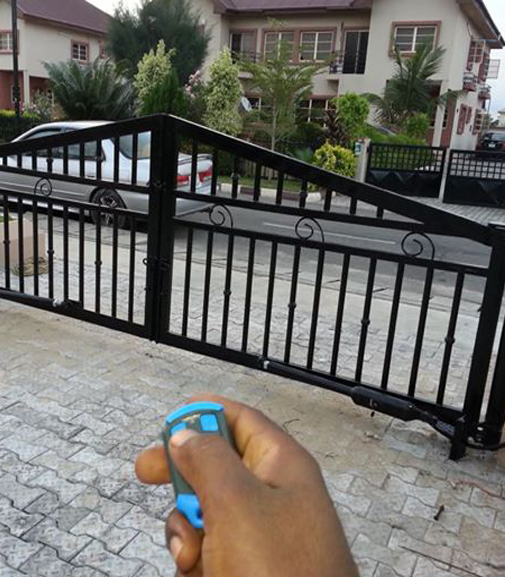GATE AUTOMATION
Gate automation utilizes advanced technology to control the opening and closing of gates, enhancing security, convenience, and accessibility for both residential and commercial properties.
Gate automation utilizes advanced technology to control the opening and closing of gates, enhancing security, convenience, and accessibility for both residential and commercial properties.


Gate automation refers to the use of technology to control the opening and closing of gates, enhancing security, convenience, and efficiency. Automated gates are commonly used in residential, commercial, and industrial settings.
1. Gate Motor & Mechanism
- An electric motor powers the movement of the gate.
- The motor is connected to an actuator arm (for swing gates) or a gear-and-rack system (for
sliding gates).
2. Control System
- A control panel manages the operation, integrating safety features and access controls.
- Users can operate the gate via remote controls, keypads, smartphone apps, or sensors.
3. Safety Features
- Infrared sensors prevent the gate from closing on objects or people.
- Automatic stop mechanisms ensure smooth operation and prevent damage.


- Sliding Gate Automation: Ideal for properties with limited space behind the gate. Uses a motor to slide the gate along a track.
- Swing Gate Automation: Designed for gates that open like doors, suitable for residential properties.
- Underground Gate Automation: Discreet system where the motor is installed underground for aesthetic appeal.
- Barrier Arm Automation: Common in parking lots, using a lifting arm to control access. Benefits of Gate Automation
- Enhanced Security: Restricts unauthorized access and improves property safety.
- Convenience: Allows remote operation, eliminating the need to manually open gates.
- Durability: Automated systems are built to withstand various weather conditions.
Up to date news on best IT solutions on the go.
©2025 Speed Technologies Ltd. I All Rights Reserved